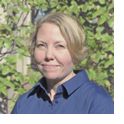
Conflict Happens
Kim Delaney, Consultation Services Coordinator
In my work for the University Consulting Alliance, I get calls from managers across campus, seeking help in hushed tones for problems they’re sure no one else has. Two employees who share a workspace but refuse to speak to each other. A team member who skips any meeting that a certain someone is scheduled to attend. A lead whose hot-blooded emails have created an environment of distrust.
Most callers are embarrassed by the situation in question and express concern about not wanting to get anyone in trouble. Many are certain that their fellow leaders oversee teams who work in a state of perpetual bliss, singing “Kumbaya” together at the end of each day. If such leaders and teams did exist, I probably wouldn’t hear from them, but the truth is most of us regularly experience conflict or discord in the workplace. It’s the perennial elephant in the office that everyone’s desperate to ignore.
But leaders ignore conflict at their peril. Discord seldom stays put; it radiates out, affecting those not directly involved with the original dispute. Unresolved conflict can produce a workplace environment that is, at best, stagnant, or, at worst, hostile. It can create excessive stress and tension for employees, all of which can affect productivity, satisfaction, and retention.
It doesn’t have to be this way. I’d like to introduce you to two consultants: Edree Allen-Agbro, who joined the Alliance earlier this year, and Betsy BeMiller of Workplace Resolutions, who joined the Alliance in 2012. Both have decades of experience working with individuals and teams to tackle conflict in fruitful ways.
Allen-Agbro believes, “Misunderstanding the nature and constructive potential of conflict damages our work relationships, our well-being, and our ability to achieve personal and organizational results. You will achieve your best results working with me if you are open to thinking about conflict, and your part in it, in innovative and constructive ways.”
BeMiller explains, “My style is highly facilitative—drawing out the best in individuals and groups and creating interactive, dynamic, positively charged growth. I provide a high degree of sensitivity, ethics, optimism, patience, neutrality, and communication skills throughout my work.”
So, what might these or other consultants do to help you with that elephant in the office? Tactics vary based on the severity of the situation and the number of employees involved, and consultants may employ a variety of specific models or methods. A common approach is for the consultant to first meet with employees individually, to—in effect—interview them about the situation, then conduct facilitated conversations with all the employees involved, and finally work with the manager or others as appropriate on a plan of action.
Because most of us don’t enjoy dealing with conflict (or admitting it exists), by the time people call me, the situation has often escalated to a crisis state. Don’t let that happen to you and your team. It’s time to look that elephant square in the eye! If you’d like to talk about this or other consulting services, please email me at alliance@uw.edu or call 206-616-8461.


